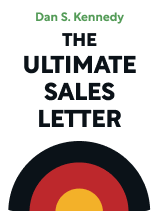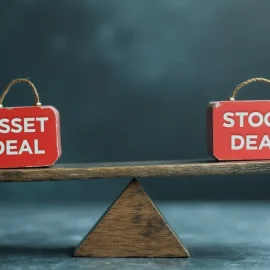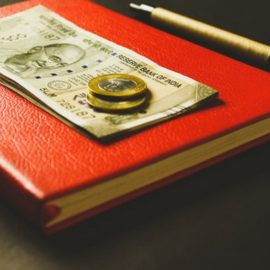

This article is an excerpt from the Shortform book guide to "The Ultimate Sales Letter" by Dan S. Kennedy. Shortform has the world's best summaries and analyses of books you should be reading.
Like this article? Sign up for a free trial here.
Are sales letters still a thing? How can they be used to get customers to buy your product?
In The Ultimate Sales Letter, Dan Kennedy (a multimillionaire entrepreneur and direct-response marketing consultant) shares strategies for crafting powerful sales letters. These letters capture customers’ attention and make them want to buy what you’re selling.
Continue reading for an overview of this top-selling book.
The Ultimate Sales Letter by Dan Kennedy
Kennedy, who says he found success as a copywriter despite not having a college degree, argues that anyone can learn to write persuasive copy and turn it into profit—you just have to believe in yourself, trust your intuition, and know your product better than anyone else.
Kennedy is the author of 13 business books, including 10 in the No B.S. business book series. Originally published in 1990 and updated in 2011, The Ultimate Sales Letter by Dan Kennedy provides time-tested foundational strategies in the art of persuasive writing that translate and remain relevant across media in the ever-evolving world of sales and marketing.
We’ve reorganized and condensed Kennedy’s tips and strategies into two parts:
- Gathering intelligence needed to write an effective sales letter
- Crafting a compelling sales letter
Part 1: Gather Your Sales Letter Intel
In this section, we’ll discuss the background information Kennedy says you’ll need to write a powerful sales letter.
Step 1: Identify and Understand Your Target Customer
Kennedy says that, before you write your sales letter, you have to first identify and understand your target customer.
Kennedy recommends that you narrow your focus to people who would buy your product and determine their fears, dreams, demographics, reading habits, history with products like yours, etc.
Kennedy suggests immersing yourself in the applicable industry by reading industry publications and websites, subscribing to email groups that prospective customers are part of, attending conventions and trade shows, and talking with people who have insights into your customer base.
Step 2: Know Your Product
Kennedy says that. in addition to identifying and understanding your target customer, you should become intimately acquainted with your product so you can highlight its benefits and address its weaknesses in your sales letter.
Kennedy recommends that you get to know your product and how it operates by using it extensively. Then you can prioritize and highlight your product’s benefits for customers in your letter based on their distinct needs and interests.
Kennedy asserts that, in addition to highlighting your product’s strengths, you must also directly address its limitations. He recommends two strategies for countering questions:
- Explain that you’ve conducted extensive research with consumers who didn’t buy your product, list every reason they gave for not buying, then address those issues
- Present a list of frequently asked questions and answers about your product.
Kennedy suggests you also use testimonials, guarantees, and free trials.
Part 2: Craft Your Sales Letter
In the previous section, we covered the background information you need to write your sales letter. In this section, we’ll go over five steps for crafting a letter that captivates, engages, convinces, and compels customers to buy your product. We’ll then discuss how to get this well-crafted letter into your customers’ hands.
Step 1: Write Your First Draft
Kennedy says the first step of crafting your sales letter is to simply sit down and start writing. He notes that this step is intentionally brief since your goal is only to get your ideas on the page.
Step 2: Grab, Engage, Convince, and Compel
Once you have a rough draft, you need to shape your letter so it grabs, engages, and convinces your customer to buy your product, then compels them to respond immediately.
Grab
Kennedy argues that your first goal in your letter is to quickly seize customers’ attention by telling them your product will solve an immediate problem. Here’s how:
- Insert a headline following your initial greeting, that states a problem your target audience faces and the solution your product or service offers.
- In your first paragraph, paint a vivid picture of your product.
- Break traditional grammar rules in favor of unusual punctuation, buzzwords, and exclamations, which build energy.
- Keep sentences and paragraphs short.
Engage
Keep them engaged by using a friendly, conversational tone, showing your personality, and repeating your sales pitch in as many different ways as possible. You can also encourage customer interaction by asking questions at the start or end of paragraphs and by writing partial sentences at the end of each page to force buyers to turn it over to find out what happens next.
Convince
Kennedy recommends providing evidence that highlights the benefits of your product or service to your customer, such as testimonials and photographs. He also says you must address the tricky subject of your product’s price, which you have to navigate carefully. He recommends two strategies to de-emphasize your product’s cost and turn customers’ focus to reasons they should buy it.
Strategy 1: Shift the conversation from your product’s price to the value or savings. Pitch the quantity of your product. Highlight the components. Emphasize its quality. Advertise the monthly, not full, price. Tell customers that investing in your product will either save or make them more money in the long run.
Strategy 2: Move beyond the topic of price by focusing on persuasion techniques. Say that you’re about to run out of your product, smart people are buying your product, only special people understand the value—and not everyone ticks all of these boxes. Paint a harrowing picture of a problem your target customer faces, provide an example that will trigger an emotional reaction in them, then say how your product will solve it. Repeatedly offer product guarantees.
Compel
Your goal is to get your customer to respond to your letter as quickly as possible. He offers the following tips:
- Set a response deadline.
- Offer incentives for quick responses.
- Provide multiple ways for consumers to respond.
Step 3: Refine, Finalize, and Send Your Letter
Your last task is to put the finishing touches on your letter and make sure your target customer receives it. Kennedy recommends the following tips:
- Add a PS at the end of your letter where you make your pitch one last time.
- Edit your letter for clarity and conciseness.
- Scan and tweak your letter for visual appeal. Emphasize key takeaways (and contact information) for customers using bold font, highlighting, or capital letters.
- Test your letter by reading it out loud to yourself and others (even sending it to yourself and others to gauge the receipt experience).
- Use materials and packaging that appeal to different customers:
- For executives and business owners: Use high-quality paper and envelopes, put your sales letter in a separate envelope from other materials you package it with, and use language that highlights the exclusivity of the product or services you’re selling.
- For mass mailings: Choose colorful, interactive materials.
- Use a hand-addressed plain white envelope, don’t put a name in the return address, and use a stamp instead of metered mail.
- Send it by first-class or express mail.
Use Your Sales Letter Strategically
Kennedy says that you can improve your brand recognition and increase customers’ response rate to your first sales letter by sending a second (and possibly third) follow-up letter 45 to 60 days after your first.
Use Your Sales Letter and Its Fundamental Elements Elsewhere
Kennedy says that you can also use your sales letter to:
- Identify qualified sales leads (people who’ve shown they’re interested in your product by responding to your call to action).
- Introduce and smooth the path for follow-up telemarketing calls.
- Bring foot traffic into your business (by announcing events and sales).
- Reduce product returns (by reinforcing that they made a good purchase).
Kennedy argues that the fundamentals required to write a powerful, long-form sales letter translate across platforms, including the internet and TV infomercials. He argues that a combination of offline and online sales letters is the best approach.

———End of Preview———
Like what you just read? Read the rest of the world's best book summary and analysis of Dan S. Kennedy's "The Ultimate Sales Letter" at Shortform.
Here's what you'll find in our full The Ultimate Sales Letter summary:
- How to craft powerful sales letters that will capture attention
- Time-tested foundational strategies in the art of persuasive writing
- Why you don't need a college degree to be a successful copywriter






